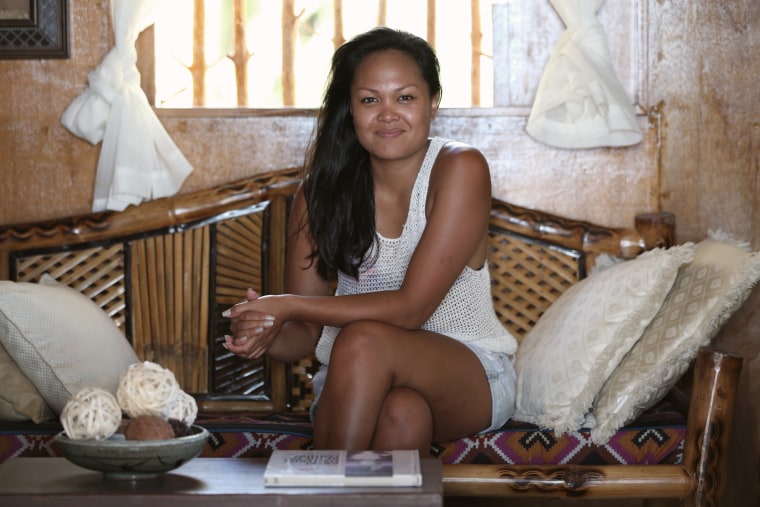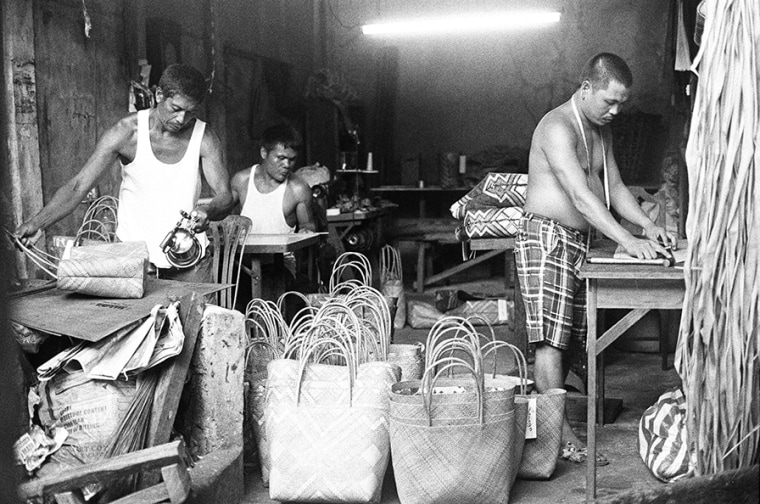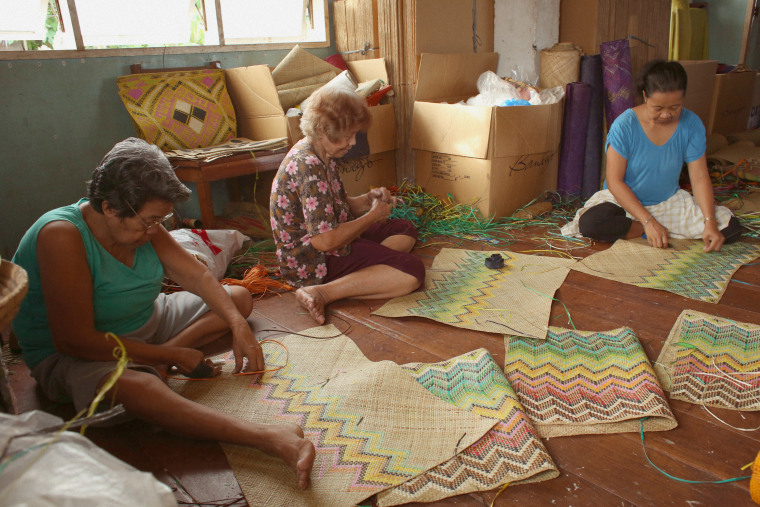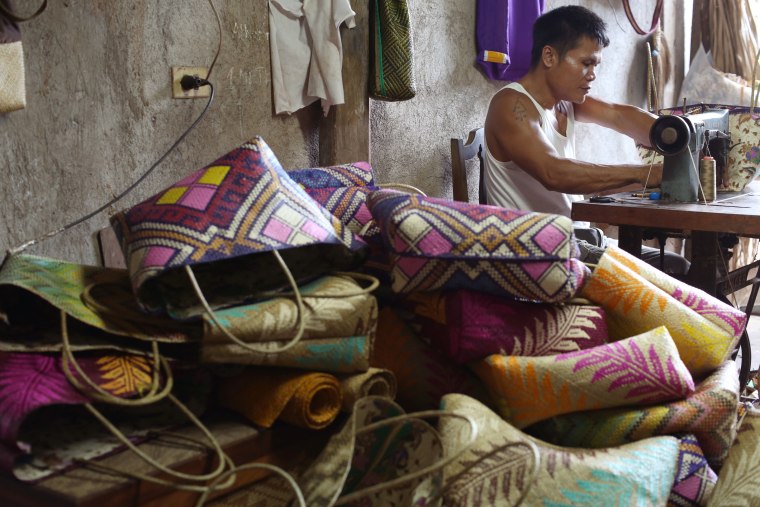When Typhoon Haiyan hit the Philippines in November 2013, designer Renee Patron witnessed her mother’s entire home ripped apart.
“It was like a scary movie, like the devil was coming," Patron told NBC News. "I looked at my parents and thought, 'This is how we’re going to die.'”
After four hours of hiding in the downstairs closet of her mother’s home, the violent thrashes of the typhoon finally came to a stop. When she walked outside, Patron said it looked like an atomic bomb hit. Everything had been wiped out — including the entire production network of her handbag line, Banago, and the homes of over 400 artisans.

Patron, a Los Angeles native, has spent her entire life traveling back and forth from the United States to the Philippines. Splitting her life between her two home countries, she said, has helped her understand the importance of living a dual identity. It was that perspective that gave birth to Banago, Patron’s line of handwoven bags and home accessories that functions with a greater purpose as a social enterprise.
Banago works with local Filipino artisans from Samar, Patron's mother’s home region, with fair trade labor to make handcrafted products sold in the West.
"...the true luxury is having the ability to help.”
"The Banago brand was created to support and expand the livelihoods of artisan communities in the Philippines where my family is from. Growing up seeing my mother and grandmother work from home sewing clothes for the Los Angeles garment districts while they took care of my sisters and I at home, I understood the importance of cottage industries and how they improve the lives of women," Patron writes on Banago's website.
In 2011, Patron left her career in the fashion industry after 15 years in search of something more meaningful. During her visit to the Philippines, she witnessed the beauty of the traditional craftsmanship and the abundance of natural fibers that grew in the area. Patron discovered an opportunity to preserve the local trades by providing jobs to both artisans and farmers, and through Banago, she has been able to invest in the community by providing workers with a sustainable livelihood.

Currently, Patron splits her time between her office in Los Angeles and her production site in the Philippines. "These artisans are like my relatives," she told NBC News.
But when Typhoon Haiyan hit, Patron saw Banago's entire production infrastructure wiped out and hundreds of homes destroyed, including her own.
According to UNICEF, Typhoon Haiyan was one of the most powerful tropical storms on record and affected over 14 million Filipinos.
Patron recalled the days following the storm and said the first relief plane did not come until the fourth day. Taking matters into her own hands, Patron teamed up with a family friend who owned a grocery store to coordinate a local relief distribution site. The team was so efficient that the local residents trusted them more than they did the government aides, she said. This lasted about three or four months.
When relief finally did arrive, Patron turned her attention to restarting production for Banago. Her focus, she said, was on getting back to business, restoring normality, and providing dependable sources of income to the local residents she worked with.

Over a year and a half later, Banago is back in full swing and giving the community opportunities to secure livelihoods, resources, and the ability to rebuild.
Now that all of the natural materials have grown back and new systems are in place, Patron is ready to take Banago to the next level.
To date, Banago has secured collaborations with major brands such as TOMS, West Elm, J. Crew, and Tommy Bahama. Patron is also working with Philippines-based organization Gawad Kalinga on a new line that will employ women in Manila, the country's capital, to crochet recycled plastic waste into attractive, upcycled creations.
“At Banago, we teach the importance of quality work and entrepreneurship in hopes of empowering women," Patron said. "So far we have been successful because we have stayed true to our beliefs that the true luxury is having the ability to help.”
Correction: An earlier version of this article said Banago worked with local artisans in "Eastern Samar," which was incorrect. The location is Samar.
